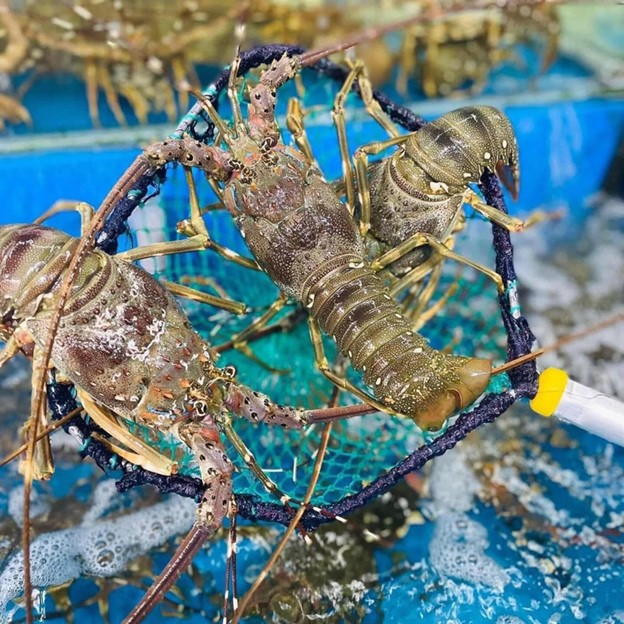Vietnam’s lobster exports to the Chinese market surged to US$30 million in January-February, marking a significant increase from the $1.6 million reported during the same period in 2023, according to the Vietnam Association of Seafood Exporters and Producers (VASEP).
In the two-month period, scalloped spiny lobster shipments made up over 90 percent of Vietnam’s lobster exports to the northern neighbor, reaching $27.6 million, soaring 80 times year on year.
Tropical rock lobster exports totaled $2.15 million, ascending 45 times.
China currently accounts for 98-99 percent of Vietnam’s lobster exports. Other markets, such as Thailand, Singapore, Hong Kong, and Taiwan, make up only one to two percent.
A VASEP leader told Tuoi Tre (Youth) newspaper that the Vietnamese Ministry of Agriculture and Rural Development worked with the Chinese side in early January to remove obstacles in sturgeon and lobster exports.
China has facilitated Vietnamese lobster shipments.
Local farmers have shifted to scalloped spiny lobsters instead of tropical rock lobsters.
In September last year, Khanh Hoa Province, Vietnam’s largest lobster farming locality, and Song Cau Town, a lobster farming hub in neighboring Phu Yen Province in the south-central region, saw tropical rock lobster prices fall by half to VND1 million ($40.3) per kilogram.
A month later, China suspended the import of Vietnam’s tropical rock lobsters as the northern neighbor said that these lobsters are an endangered species.
Chinese authorities mandate that nations seeking to export tropical rock lobsters to their market provide evidence that the lobsters are farm-raised and not sourced directly from the sea.
They must use lobster larvae that are from at least the second generation removed from the wild.
Tropical rock lobster farming facilities must register with the Chinese side with their information attached.
Like us on Facebook or follow us on Twitter to get the latest news about Vietnam!



















































